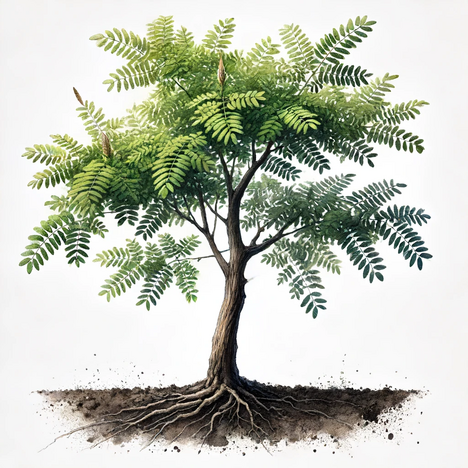Common robinia

The relationship between dogs and nature is as old as time itself. As dog owners, it is our duty to ensure that the environment in which our faithful companions play and explore is safe for them. The common black locust tree, with its deep-rooted branches and tempting pods, might seem harmless at first glance, but appearances can be deceptive. In this guide, we will take an in-depth look at the components of this tree and what dangers they can pose to our beloved dogs.
The composition of common black locust and its risks to dogs
Toxicity of black locust
The common black locust tree contains several toxic components that can be harmful to dogs. The main active ingredient, robinin, a glycoside, is mainly found in the bark, leaves and seeds of the tree. This substance can lead to a number of health problems in dogs that come into contact with it.
Symptoms of poisoning
Symptoms of common black locust poisoning can vary depending on the amount of toxins ingested. The most common signs include
- Nausea and vomiting
- diarrhea
- lethargy
- salivation
- abdominal pain
In severe cases, neurological symptoms such as tremors, seizures or even coma may occur. It is extremely important to seek veterinary help immediately if poisoning is suspected.
Preventive measures and dealing with poisoning
Avoiding contact
The safest way to avoid poisoning is to completely exclude contact between your dog and the common robinia. When out walking, make sure that your dog does not chew or eat the leaves or seeds of the tree.
What to do in the event of poisoning?
If your dog does ingest parts of the black locust tree, you need to act quickly. Make a note of what and how much your dog has eaten and contact a vet immediately. The information you provide can be crucial for treatment.
Although common black locust is a natural part of our environment, it poses serious risks to our dogs. Being aware of its toxic properties and taking preventative measures can help ensure the safety and health of our furry family members. As responsible dog owners, it is our responsibility to recognize the dangers posed by such plants and protect our dogs from them.
If you notice any signs of hypersensitivity or poisoning in your dog, you should see your vet immediately. We are not a substitute for a vet, but we try to be as accurate as possible. Every dog reacts differently and we recommend you get a second opinion or consult your vet if in doubt.
Stay healthy and take good care of your four-legged friend!😊